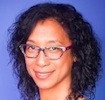The classroom at the City University of New York sat attentively watching the browser on the large screen point to LinkedIn. Everyone in the room was familiar with the social network, but they were journalists and had come to see how they could use it for their own specific purposes.
While explaining how the audience could use LinkedIn, Corporate Communications Manager Yumi Wilson was also ushering them through a social media door, one she has unlocked for journalists in person or through online webinars over the past several months.
It’s all part of an expansion strategy for LinkedIn, which has seen membership grow exponentially from 32 million members in 2008 to 300 million in 2014. One part of that strategy is inviting journalists into a group called LinkedIn for Journalists, which boasts more than 55,000 members. Wilson said she wants journalists to use LinkedIn as a tool for research, as well as one for connecting with others and conducting job searches. She reaches out and spreads the gospel of LinkedIn wherever she finds people in the news business.
“I think when you’re growing communities you have to be proactive,” said Wilson, who was an associate professor at San Francisco State University when she first became involved with LinkedIn. She started working for the network full time in September 2013. “I reach out to people who might not be using LinkedIn for Journalists, or not using the platform. I use our LinkedIn search tool to find journalists at various newspapers who haven’t been using it.”
As part of her outreach, Wilson draws about 200 people into her monthly webinars. During the sessions, she gives tips on improving social media profiles on LinkedIn, using it for searches, and exposing profiles to others who may be searching for the journalists. When they are done with the training, the journalists receive premium memberships for a year, which gives them access to advanced features available on LinkedIn.
Although Wilson’s evangelism has much to do with the popularity of LinkedIn for Journalists, its significant following also comes from users spreading the word amongst each other.
“My webinars are normally full; the next available one is in July and that is the result of people finding out about it through word of mouth,” said Wilson.
She says the journalists who become a part of the community have turned it not only into a one-stop shop for researching stories and sources, but for discussing media news as well.
“I find as a moderator discussions about the industry are most popular. But let’s say a fellowship has been announced, you can also announce it here. Some may share a job within the group, others may share information about the tutorials.”
When users engage LinkedIn’s advanced search tools, they can carry out investigations of people and companies that may otherwise have taken days. This is because people and companies create profiles that they want people to see and they post them to connect with others.
In Wilson’s view, social media like LinkedIn, Facebook and Twitter will increasingly serve as a reporting tool, and as similar websites launch, that use will only continue.
“Journalists are going to Twitter to stay on top of the news, they go to Facebook to find regular voices, and LinkedIn is where you connect with experts to speak on their fields. As new platforms come out, we’re going to see more of that,” she said.
Cher Jones, a social media trainer and head of the Toronto-based firm Socially Active, has been watching LinkedIn’s progress and believes that it has evolved into an important tool for those in news.
“Immediately what you’re finding, especially for journalists who have a credible profile, is that they can leverage that with whomever they are trying to connect with, and that is a big deal, particularly when you’re doing an investigative piece,” said Jones. “On the professional career growth side, LinkedIn is a living, breathing CV of your past successes. It’s different than a resume, because if you’re actively seeking recommendations where people are talking about your work ethic, people are recognizing how important that is in getting interviews or insider information.”
Wilson said she plans to continue to travel to journalism conferences and newsrooms, introducing the platform to as many people in the news business as she can. She believes that it will become as essential a tool for reporters in newsgathering as it is for job recruiters filling positions.
But she warns that social networks should not replace tried-and-true methods of reporting.
“What I’ve learned is that nothing replaces the face-to-face meeting,” she said. For a job or story, you still want to meet that hiring manager or source. What social media helps to do is make reaching out to people a bit easier.
Wilson can be reached at ywilson@linkedin.com or find her on LinkedIn.
Madison Gray is a Brooklyn, N.Y.-based multimedia journalist specializing in urban issues and criminal justice. The Detroit native has written for TIME.com, the Associated Press, and the Detroit News, among many others. Follow him on Twitter @madisonjgray.
Related: Live chat replay: How to make LinkedIn work for you







